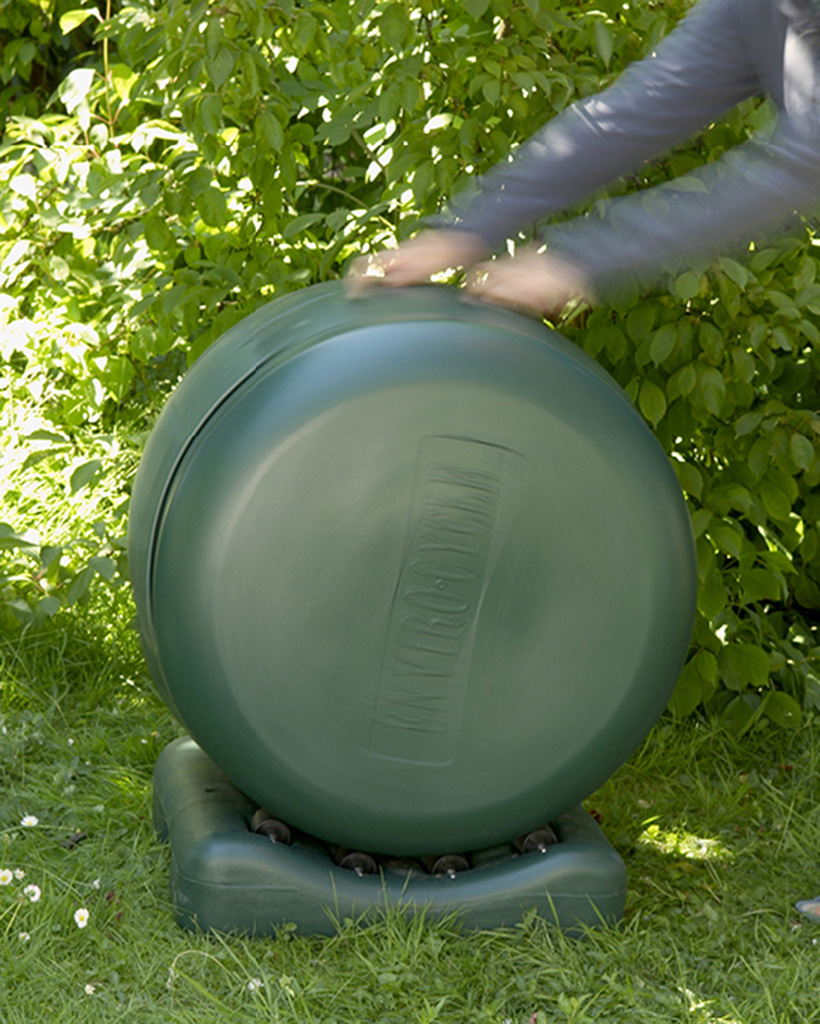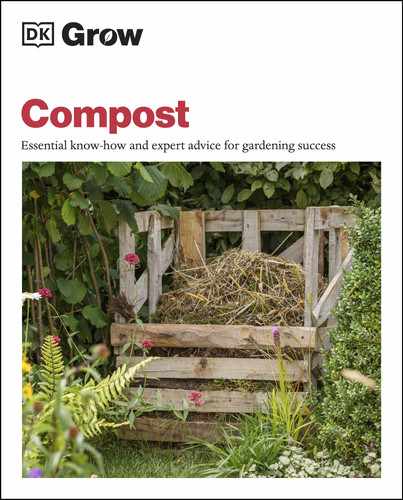Buying a bin
There are many styles of bins on the market and the choice you make will depend on a number of factors, including the size of your garden, so weigh the pros and cons to be sure a bin checks all your boxes. Decorative wooden models can create an attractive focal point in a garden where a heap cannot be hidden from view, while tumbler bins that can make compost in just a few weeks may be the right choice if you have a small garden and lots of waste to process. The cost of bins varies greatly, too, so check what you are getting for your money and remember that big is usually best.
Making your choice
When selecting a bin, factors to consider before making your final decision will probably include the price, style, durability, and size. A plain black plastic conical model will usually be the cheapest option, or may even be free from your local authority. This type of basic bin would be suitable if you can place it where it will not create an eyesore, such as behind a shed, although hiding it out of sight may also mean it is less accessible (for more on siting your bin, see Siting a Heap or Bin). To reduce the plastic pollution in the environment, opt for a bin made from recycled materials.
Prettier models, such as beehive-style bins, are often made from biodegradable wood, but also check that they have Forest Stewardship Council (FSC) certification showing that the timber is from a renewable source. Some are quite small, and will therefore need careful management and take longer to produce compost.
Other bins, such as the Johanna bin and tumbler types, may claim to speed up the composting process, but consider how easy they are to use before rushing into a purchase. Some tumblers, for example, are rolled along the ground, which requires strength and could potentially strain your back.

If you want a plastic bin, select one made from recycled materials to lower your carbon footprint.
Easy access
Look for a bin with a wide top that allows you to fill it easily, and also bear in mind how you will access the finished compost. In the case of a plastic conical model that does not have a hatch or tray at the bottom, this will mean lifting off the bin and placing it nearby, removing the compost and refilling the empty bin with any undecomposed material. Some wooden models have removable slats on one side, allowing you to add more as you fill up the bin, and take them out to get to the finished compost. If buying a bin with a fixed frame, think about how you will remove the heavy compost when it is ready.

Bins with a hatch at the bottom allow easier access to the finished compost.
Making Compost | BUYING A BIN
PROS AND CONS OF STORE-BOUGHT BINS
CONICAL PLASTIC BIN
PROS Inexpensive and practical. Models come in a wide range of sizes. Some types are made from more eco-friendly recycled plastic.
CONS Not very attractive. Contents may need turning to inject more air. Plastic units do not retain heat as well as wooden models. Removing the finished compost requires space and strength to lift off the bin. Made from nonbiodegradable materials.
BIN WITH HATCH
PROS Can be inexpensive, depending on the design. Allows you to access finished compost while still filling up the top. Some models are made from eco-friendly recycled plastic or FSC-certified wood.
CONS After removing the compost you may need to push the other ingredients down to fill the void. The hatches or hinges can break, although replacements are sometimes available. May bring nonbiodegradable material into the garden.
BEEHIVE-STYLE BIN
PROS Attractive in a small garden setting. Some models are made from FSC-certified, biodegradable wood (check with manufacturer). Hinged lid and large opening offers easy access. A wooden drawer or hatch allows easy removal of finished compost.
CONS Usually expensive. Few are large enough for quick composting methods. Models painted in pale colors will not heat up as quickly as darker-colored wood or plastic.

Beehive-style bin
TUMBLER BIN
PROS Manufacturers claim this type makes compost quicker than static models, although some studies show that large hot heaps are just as fast. Can reach high temperatures that kill weeds and pathogens. Eliminates problems with vermin.
CONS Expensive. Fast compost requires regular turning. Some tumblers need space to roll them and this will take effort, too. Excludes worms, which help to kill weed seeds and increase the nutrient content of the compost. Not very well insulated. The finished compost often has a coarse texture.

Tumbler bin
STACKABLE BIN
PROS Often made from biodegradable wood. The layers make access easy; you add a new stack as you fill up the bin. You may find inexpensive kits that you put together yourself.
CONS Space needed to store unused stacks. Some models are made from nonbiodegradable plastic.
JOHANNA BIN
PROS Can compost cooked food, including fish, meat, bones, and dairy. Perforated base allows decomposers in, but keeps vermin out. Good for hot composting method. A hatch allows access to mature compost.
CONS Expensive, although some local authorities may offer a discount. Requires frequent stirring or turning for fast results. The insulating jacket for the bin is made from nonbiodegradable foam polyethylene.

Johanna bin
